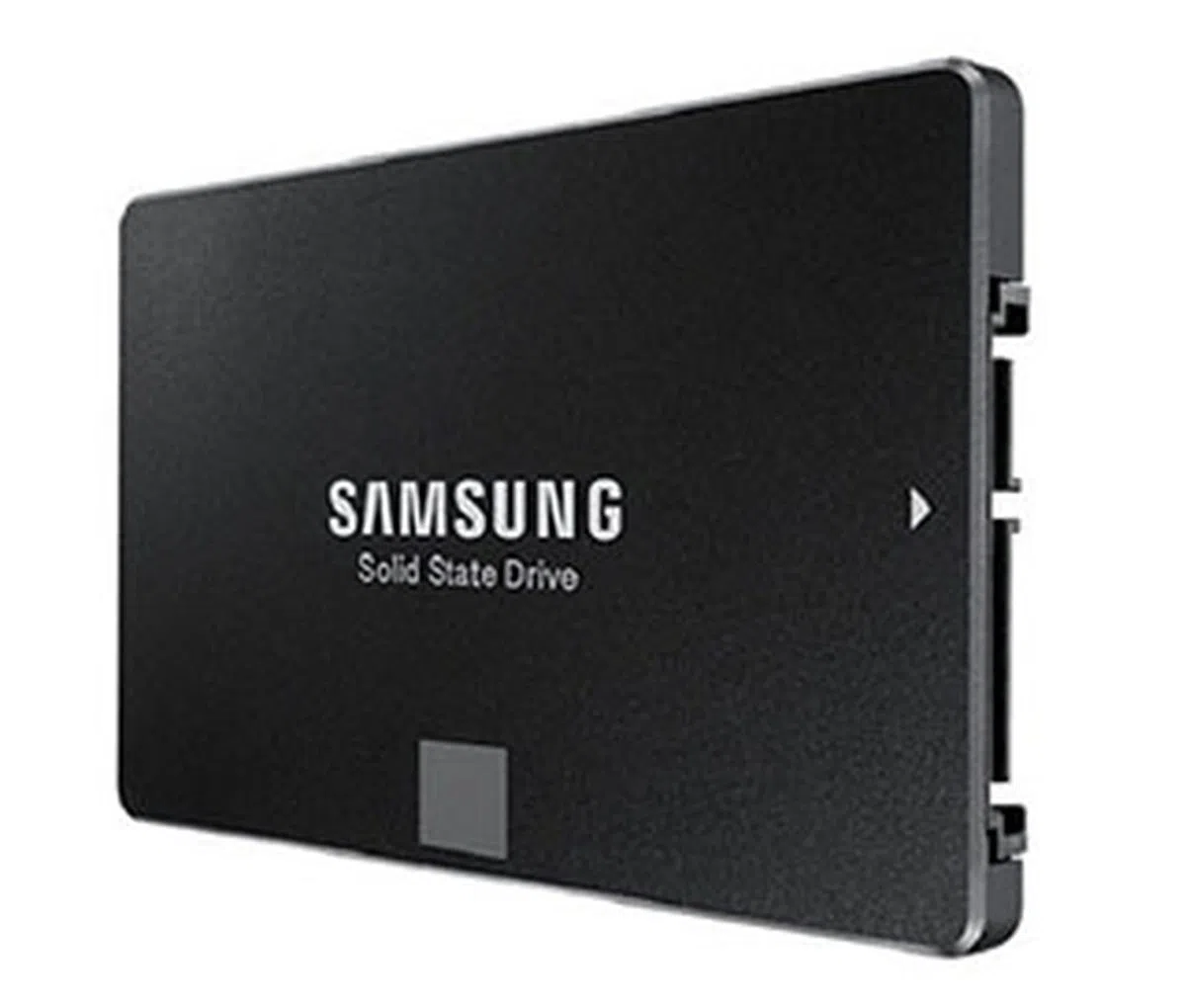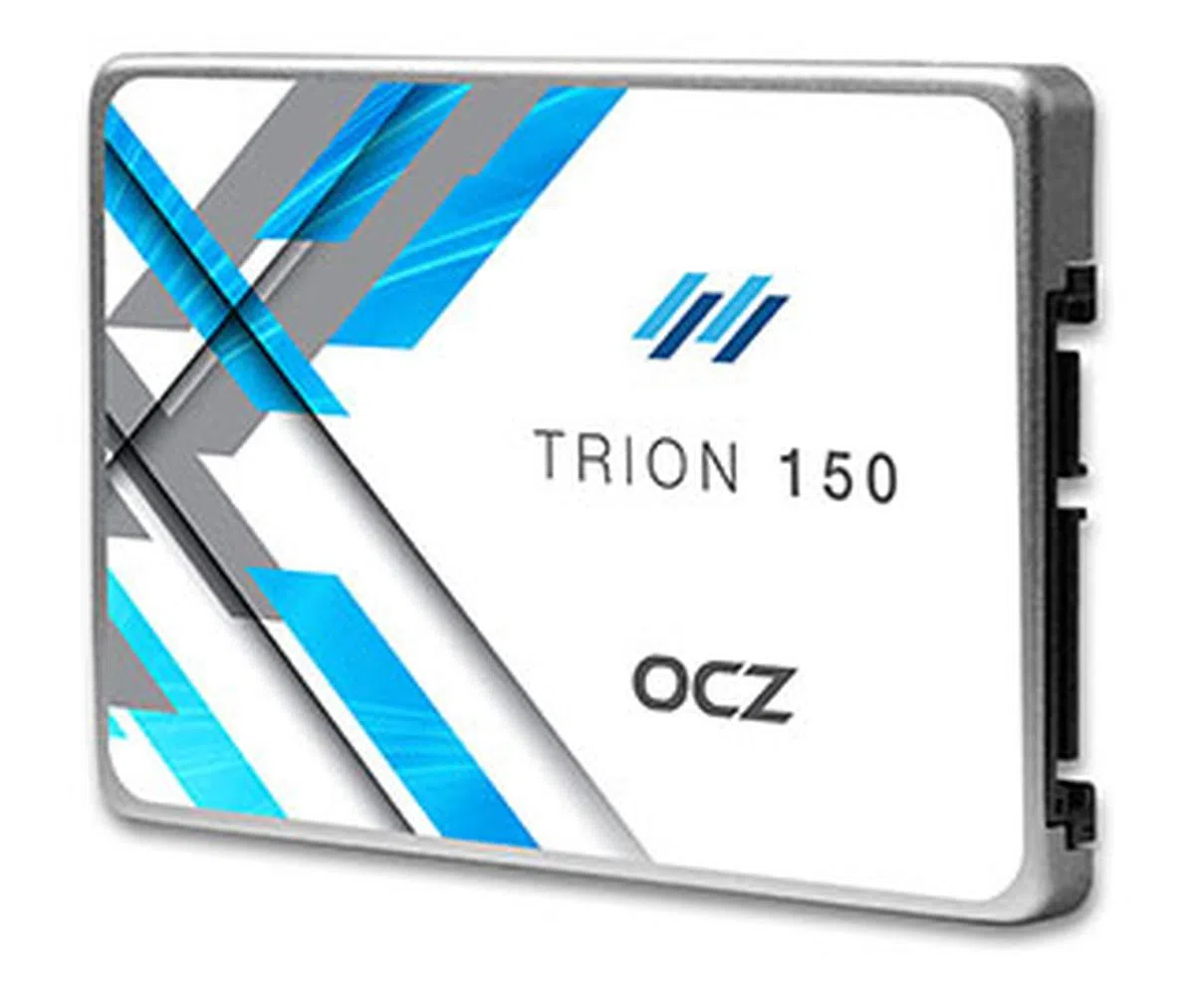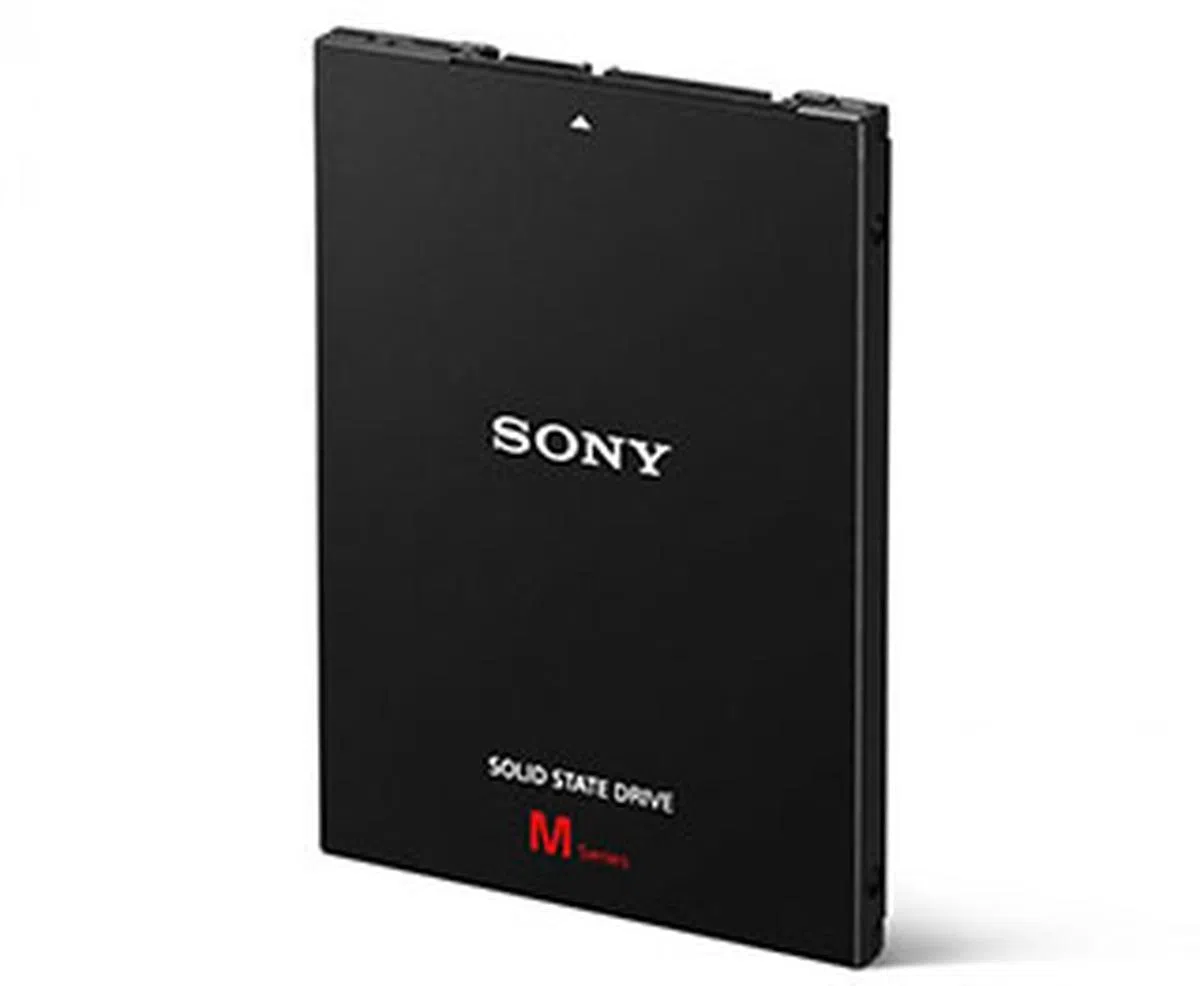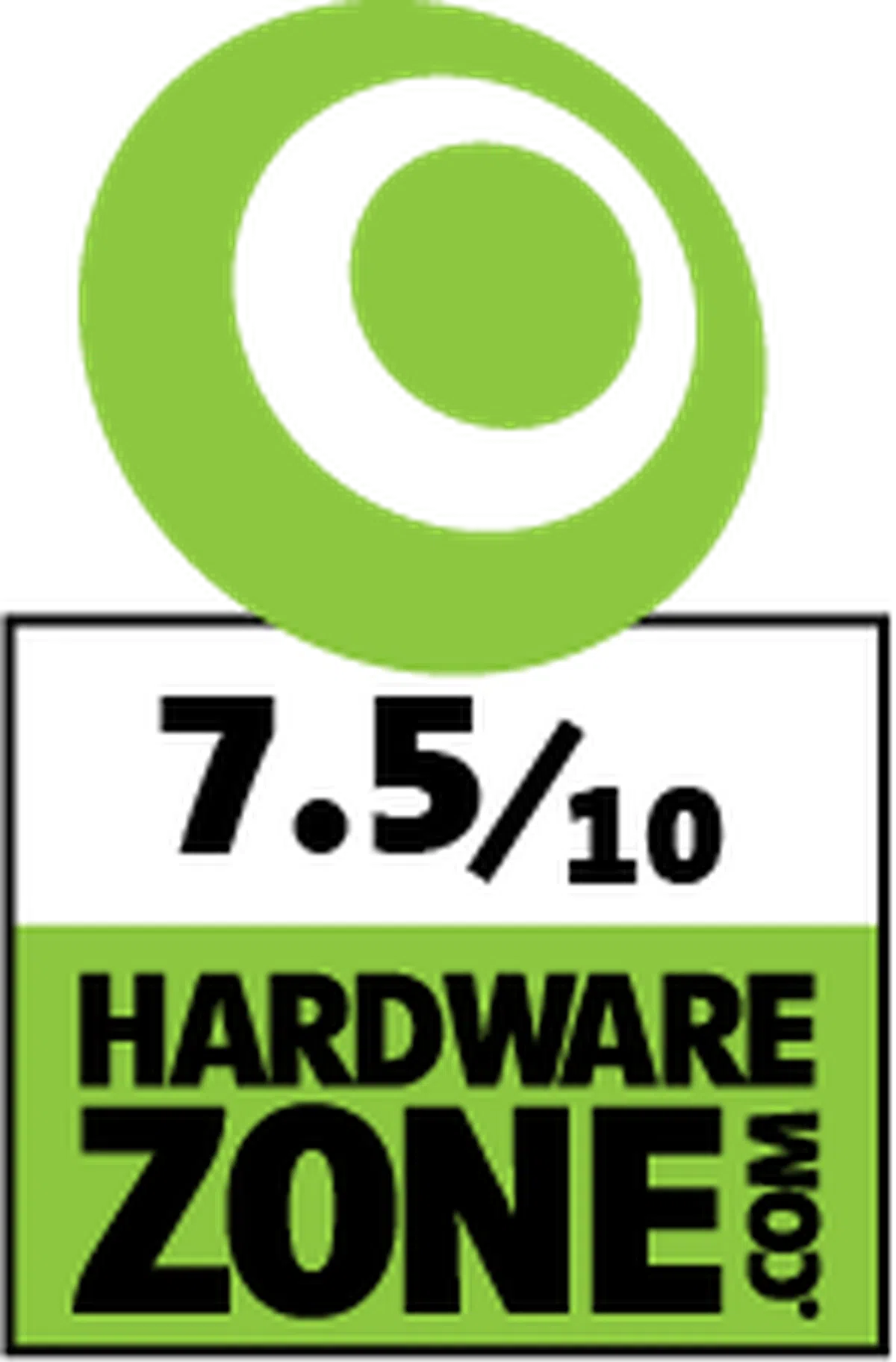Entry-level SSD Showdown: OCZ Trion 150 vs. Samsung SSD 750 Evo vs. Sony SLW-M
SSDs have never been more affordable. And in a bid to enable more mainstream users to jump onto the SSD bandwagon, SSD manufacturers are releasing even more affordable SSDs by the day. Here are three of the latest entry-level SSDs from OCZ, Samsung and Sony.
By Kenny Yeo -
Note: This article was first published on April 20.
Entry-level Appeal
In the early days of the SSD, they were prohibitively expensive. Just four years ago, a 240GB Intel SSD 520 Series SSD would have set you back over $500. Today, a 240GB drive can cost as little as $130. This dramatic fall in price means that more users and system manufacturers are ditching mechanical hard disk drives and turning to SSDs for storage.

SSDs have never been cheaper and here are three of the latest entry-level SSDs to hit our shores.
Though SSDs still cost more per gigabyte than traditional mechanical hard disk drives, they have one tremendous advantage and that’s performance. Even the most basic SSD will run circles round the fastest hard disk drive. In addition, SSDs are compact, which means system builders can build more portable and compact systems. SSDs are also much more power efficient, which means they are better suited for use in mobile devices like notebooks.
While there’s a trend of an increasing amount of SSDs using the faster PCIe and M.2 interfaces, these SSDs are really designed for enthusiasts who want the absolute pinnacle of storage performance. For the rest of us, SATA SSDs are here to stay, and this is evidenced by the fact that SSD manufacturers are still coming up with new SATA SSD designs. In this round-up, we check out three of the latest entry-level SATA SSDs from OCZ, Samsung and Sony.
OCZ Trion 150
The Trion is OCZ’s range of entry-level drives and the new Trion 150 is essentially an update of the Trion 100 from last year. The Trion 100 from last year was OCZ’s first drive to employ the use of TLC NAND and the new Trion 150 is no different. In fact, the Trion 150 uses Toshiba’s latest 15nm TLC NAND.

The new OCZ Trion 150 is a minor update of the Trion 100 SSD that we reviewed last year.
Apart from the shift to new 15nm TLC NAND, OCZ has also updated the firmware of the drive and has dedicated more capacity to the SLC buffer so as to improve overall performance. According to OCZ, they are claiming performance in certain scenarios to be boosted by as much as 50%.
Endurance remains the same, and the 480GB variant that we have here is rated for up to 120TB total writes or 110GB a day. That’s plenty even for enthusiasts, as most mainstream consumer workloads only consume around 10GB to 30GB of writes a day.

The OCZ Trion 150 supports SATA 6Gbps.
The controller of the new Trion 150, however, remains the same. It’s the Toshiba TC58 and little details are known about it. However, we have read some reports of it as being a custom branded variant of the Phison’s new high-end PS3110-S10. Unfortunately, OCZ will neither confirm or deny this. If you are wondering why OCZ’s own Barefoot controller isn’t employed, it’s because the Barefoot controller is unable to support TLC NAND.
As we mentioned earlier in the review of the Trion 100, one key improvement that this new Toshiba controller brings is the support for more aggressive DevSleep and power savings modes which will greatly benefit notebook users. You can read more in our review of the Trion 100, but the key figures to note is that in DevSleep and idle modes, we are looking at figures of just 6mW and 830mW respectively, which are greatly improved over OCZ’s own Barefoot controller.

The OCZ SSD Guru utility is a nifty tool that lets users easily manage and monitor their OCZ SSDs.
Like the earlier Trion 100, the new Trion 150 will be offered in four capacities - 120GB, 240GB, 480GB and 960GB - and will be offered with OCZ’s fantastic 3-year ShieldPlus warranty. And since the Trion 150 is targeted at entry-level users, it comes without any accessories. It is, however, compatible with OCZ’s SSD Guru utility which lets users easily manage and monitor their OCZ Trion 150 drives and update its firmware.
Samsung SSD 750 Evo
With the high-end SSD market handily tied up with their new blazingly fast SSD 950 Pro, Samsung is turning their attention to the entry-level market again and recently announced their new SSD 750 Evo.

Can you tell which is which? Ok, the new Samsung SSD 750 Evo is on the left, while the SSD 850 Evo is on the right.
The SSD 750 Evo uses Samsung’s own TLC NAND, which helps reduce cost, but at some expense of performance and endurance. According to Samsung, the SSD 750 Evo is targeted primarily at OEMs and system builders, providing them with a drive that has superior performance characteristics as compared to mechanical hard disk drives, but at a more palatable price point.
Inside, the SSD 750 Evo uses Samsung’s latest 16nm TLC NAND. Samsung’s last planar TLC NAND drive, the SSD 840 Evo, used 19nm TLC NAND. It also uses Samsung’s own MGX controller, the same controller that’s currently being employed in the SSD 850 Evo. Power consumption figures are suitably impressive. In DevSleep mode, the SSD 750 Evo consumes just 6mW of energy; while in idle mode, the drive’s power consumption is rated at just 50mW - a great deal less than the earlier OCZ Trion 150.

Unlike the SSD 850 Evo which is available in SATA, mSATA and M.2 form factors, the SSD 750 Evo will only support SATA 6Gbps.
One feature that the SSD 750 Evo has that its competitors at this price point doesn’t is hardware encryption. Thanks to the MGX controller, the SSD 750 Evo has full hardware support for 256-bit AES encryption and also supports TCG 2.0 Opal and the IEEE 1667 standards. Given today’s increased concern about security, the this added feature gives the SSD 750 Evo a big advantage over its competitors.
And like Samsung’s other TLC NAND drives, the SSD 750 Evo will benefit from Samsung’s performance-enhancing technologies like TurboWrite and RAPID mode. If you have already forgotten, TurboWrite dedicates a small portion of its TLC NAND to work as an SLC write buffer. This helps boost its write performance to make up for the shortcoming of TLC NAND, which typically suffers from inferior write performance. RAPID mode, on the other hand, is a caching technology that was introduced in the middle of 2014 to boost random I/O performance with smaller size data at low queue depths. Essentially, it makes use of unallocated system memory and spare CPU cycles to cache data and boost performance. We investigated Samsung's RAPID mode technology in the past and found it to work very well.

Samsung's excellent Magician utility lets users quickly monitor, optimize and manage their Samsung SSDs.
The Samsung SSD 750 Evo comes with no accessories other than Samsung’s own data migration software and the Samsung Magician utility. Samsung Magician is a nifty app that lets users easily manage and monitor their drives, optimize its performance and also update its firmware. One thing to note is that the SSD 750 Evo will only be available in two capacities - 120GB and 250GB.
Sony SLW-M series
When Sony announced in February earlier this year that it was releasing its first ever SSDs, we were all taken aback. Prior to this, the company had announced that it would be cutting all non-profitable businesses and focus on its core businesses. So to announce brand new SSDs, a market that it had never had a part in before, was surprising, to say the least.

Yup, we never thought we would see a Sony-branded SSD, but here it is.
With no experience in making SSDs and no NAND manufacturing facilities of their own, it’s no surprise that Sony had to turn to third-party providers for their SSD's controller and NAND.. The controller is Phison’s new high-end PS3110-S10 controller and the NAND is Toshiba’s 19nm TLC NAND.

Like the other two drives here, the Sony SLW-M SSD also supports SATA 6Gbps.
The use of Phison’s new S10 controller is intriguing because it is a fairly high-spec controller that currently sees action in quite number of other SSDs including the Corsair Neutron XT, Kingston HyperX and a few more. It has four cores and eight NAND channels and was designed by Phison to work with both MLC and TLC NAND and supports up to 2TB in capacity. Interestingly, it also supports 256-bit hardware AES encryption - a feature that is lacking in many entry-level and mid-range SSDs.

The Sony SSD Toolbox utility is pretty limited in its functionality as it only displays the status of the drive.
In terms of packaging, the Sony SLW-M comes with a spacer to boost its height to 9.5mm and also a free copy of Acronis True Image 2015 to make it easy for users to migrate to their new Sony SSD. There's also Sony's SSD Toolbox utility, but it is pretty limited in its use as it only displays basic information about the drive's status and health, and cannot be used for functions like updating the firmware or optimizing the drive's performance. The Sony SLW-M will be available in two capacities - 240GB (SLW-MG2) and 480GB (SLW-MG4).
Test Setup
The drives will be tested on our updated storage testbed using the Windows 10 operating system, which has the following specifications:
- Intel Core i7-4770K (3.5GHz)
- ASUS Z97-Deluxe/USB 3.1 (Intel Z97 chipset)
- 2 x 4GB DDR3-1600 memory
- MSI GeForce 8600 GTS
- Windows 10 Pro
We have also revised our benchmarks and the list used are as follows:
- AS-SSD benchmark 1.8.5636.36856
- CrystalDiskMark 5.0.2
- PCMark 8 (Storage suite)
- Atto Disk Benchmark 3.0.5
- Iometer (version 2006.07.27)
This is the list of drives and their capacities tested:
- OCZ Trion 150 (480GB)
- Samsung SSD 750 Evo (250GB)
- Sony SLW-M (480GB)
- OCZ Trion 100 (240GB)
- Samsung SSD 850 Evo (250GB)
Apart from pitting the three drives against each other, we are also interested to see how the new OCZ Trion 150 will perform against the older OCZ Trion 100. In addition, it will also be intriguing to see how Samsung’s new SSD 750 Evo matches up against the SSD 850 Evo, which is one of the best mainstream SSDs around right now.
But before we begin our analysis of the results, one thing to note is that the capacity of the drives are not equal and this could affect performance. Moving forward, we hope to review drives with capacities of around 500GB as that capacity point is slowly but surely becoming more popular. Generally speaking, larger capacity SSDs are often quicker as they usually contain more NAND chips which allows it to take advantage of the multiple NAND channels of the controller. In this case, the SSD 750 Evo is available only in 120GB and 250GB capacities, so it could be at a disadvantage against the OCZ Trion 150 and Sony SLW-M drives.
PCMark 8
PCMark 8 is the most up-to-date system benchmarking software from benchmarking specialists Futuremark. It was designed for Windows 8 machines (now updated for Windows 10) and the storage suite test puts drives through a collection of 10 different real life workloads involving applications such as Photoshop, Illustrator, InDesign, Word, Excel and even games like Battlefield 3 and World of Warcraft.
The Samsung SSD 750 Evo put up a strong performance on PCMark 8 and managed their highest score amongst the trio of drives. Although the difference in PCMark 8 scores wasn’t that great, the Storage Bandwidth results paint a different picture. With its speed of 293.46MB/s, the SSD 750 Evo was a good 45% faster than the OCZ Trion 150 and 47% faster than the Sony SLW-M. In fact, it only lost our marginally to the SSD 850 Evo, so all things considered, that’s a pretty impressive showing.



CrystalDiskMark 5.0.2 Results
CrystalDiskMark is an easy-to-run and quick utility to use to gauge a drive’s performance. It measures sequential read and write performance and random read and write speeds of random 4KB and 4KB (queue depth 32) data.
On CrystalDiskMark, the three drives were quite evenly matched. In terms of sequential read and write speeds, the OCZ Trion 150 was the leader, but only by a very slight margin over the Sony SLW-M. The SSD 750 Evo was handicapped by its smaller capacity, but it still managed a very respectable performance.
As for 4K read and write speeds, the SSD 750 Evo came in first, but again, the margins wasn’t that great. Though it must be noted that the Sony SLW-M’s 4K write performance was quite poor as it was the only drive to go under the 100MB/s mark.
The SSD 750 Evo was the top performer on the demanding 4K, 32 queue depth workload, but it was only about 8% faster than the other two drives, which isn’t a lot.



AS SSD 1.8.5636.36856 Results
AS SSD is a benchmark that uses non-compressible and completely random data. This benchmark is useful because some controllers, like the once popular but now defunct SandForce SF-2281, compress data first before moving them around. However, with non-compressible and random data, controllers cannot compress the data first, which forces them to deal with data as they are. Therefore, this is a useful benchmark to prevent drivers using controllers like the SF-2281 controller or similar from gaining an upper hand.
The Sony SLW-M emerged as the victor in the AS SSD benchmark. Beginning with the Copy benchmark, the Sony drive managed impressive speeds that placed it top or near the top of other drives. Moving on, its sequential as well as its 4K read and write speeds were impressive too.
However, its most impressive performance was on the intensive 4K, 64 queue depth workload where it achieved the fastest read and write speeds. On this workload, we can see that the OCZ Trion 150 suffers from poor read speeds, while the SSD 750 Evo’s write speeds also start to falter as its TurboWrite cache is exhausted.




ATTO Disk Benchmark 3.0.2 Results
ATTO is one of the oldest benchmarks around, but it’s still a useful tool to gauge a drive’s adeptness at managing compressible data. It’s also useful for seeing how a drive performs across a variety of different transfer block size.
There’s was little to separate the three drives on the ATTO Disk Benchmark. Across all tested file sizes - 8MB, 32K and 4K - all three drives managed very comparable, and in some cases identical, read and write speeds. The only significant difference is the OCZ Trion 150’s slightly poorer write speeds when it came to smaller data blocks of 4K. It managed the lowest reading of 278.67MB/s, which is about 10% off the pace against the fastest drive - Samsung SSD 750 Evo.



Iometer Results (Part 1)
Lastly, we put the drives through the rigorous grind of Iometer, with different workloads and I/O queue depths. We have chosen to show results from a queue depth of 1 to 5 as this better represents the workloads a typical consumer might face. On the intensive Iometer benchmark, the Samsung SSD 750 Evo was the top performer. While there was little to separate the drives on the 64K Streaming Reads and Streaming Writes workloads, the SSD 750 Evo was clearly the better performing drive on the more intensive File Server and Web Server workloads. As for the SSD 850 Evo, while it was disappointing on the 64K Streaming Reads workload, it picked itself up on the subsequent workloads and was by far the best performing on the File Server and Web Server workloads. The OCZ Trion 150 and Sony SLW-M performed quite similarly on the File Server and Web Server workloads.




Iometer Results (Part 2)
Finally, we look at the I/O response times for the workloads reported on the previous page. Unsurprisingly, the OCZ Trion 150 recorded the overall highest average I/O response times, while the Samsung SSD 750 Evo and Sony SLW-M's response times were quite comparable on the 64K Streaming Reads and Streaming Writes workloads. However, the two Samsung drives recorded significantly lower response times on the more intensive File Server and Web Server workloads, which is a testament to the performance of Samsung's SSDs.




And the winner is...
We have said this before but it bears mentioning again. Vertical integration can lead to tremendous benefits, especially in the SSD business. What we mean by a truly vertically integrated SSD manufacture is one that makes its own NAND chip, builds its own controller, and designs its own firmware. As of now, there are only a handful of SSD manufacturers and SSD designs that can claim to being truly vertically integrated and Samsung happens to be one of them.
Being vertically integrated means it can have access to the best NAND chips; better cost savings; a proprietary controller that has been designed specifically for their own NAND; and firmware that leverages on the benefits of their own controller and NAND while mitigating their shortcomings. And this is clearly illustrated by the stellar performance of the SSD 750 Evo.

The Samsung SSD 750 Evo is our top performer; the OCZ Trion 150 is the most affordable; and the Sony SLW-M performs unexpectedly well.
Samsung has poured their SSD expertise into the SSD 750 Evo, and it was easily the top performing drive of the trio. This is impressive especially when you consider that it has only half the capacity of the other two drives.
Now owned by Toshiba, OCZ is one of the few vertically integrated SSD manufacturers and is one of Samsung's biggest rivals. But if reports of the Toshiba TC58 controller being a variant of the Phison S10 controllers are true, then the Trion 150 isn’t designed completely in-house in the same sense as the SSD 750 Evo. And this could also explain its pretty lackluster performance. Even so, credit must be given where it is due, and the Trion 150 does seem to be quite significantly faster over the older Trion 100. That said, we do wonder how much of the improvement is due to the larger capacity tested.
But perhaps what’s most surprising of all is the Sony SLW-M SSD. The SLW-M put in a respectable shift and was quite competitive in most scenarios and even handily bested its competitors in some benchmarks and workloads. There isn’t much to criticize about its performance and it’s a really decent performing drive.
Despite the SSD 750 Evo’s impressive performance, it is mostly price and features that determines whether an entry-level drive makes or breaks. After all, how many casual users can appreciate a 20% advantage in 4K read and write speeds? Now let’s take a look at the table to see how the drives match up in terms of pricing and features:-
Drive | OCZ Trion 150 (240GB) | OCZ
Trion 150 (480GB) | Samsung
SSD 750 Evo (250GB) | Sony
SLW-MG2 (240GB) | Sony
SLW-MG4 (480GB) |
Encryption | No | No | Yes (256-bit AES) | Yes (256-bit AES) | Yes (256-bit AES) |
Accessories | Drive management utility. | Drive management utility. | Cloning and drive management utility. | 9mm spacer. Cloning and drive management utility. | 9mm spacer. Cloning and drive management utility. |
Warranty | 3-years ShieldPlus | 3-years ShieldPlus | 3-years | 3-years | 3-years |
Price | S$95 | S$190 | S$125 | S$139 | S$259 |
Price per gigabyte | S$0.40/gigabyte | S$0.40/gigabyte | $0.50/gigabyte | S$0.57/gigabyte | S$0.53/gigabyte |

If you don't mind the smaller 250GB capacity, the Samsung SSD 750 Evo is one of the best entry-level SSDs available right now.
The Samsung SSD 750 Evo is an extremely capable performer and is a testament to Samsung's proficiency in designing fast SSDs. It is easily the best performing drive, despite the capacity disadvantage, and only shows its limits on more intensive workloads when compared against its more illustrious SSD 850 Evo sibling. And even though it costs more than the most affordable entrant in this shootout, we think the premium is well justified considering its features such as support for hardware encryption and Samsung's RAPID mode which further boosts performance. In many ways, the SSD 750 Evo can be thought of as a cheaper version of the SSD 850 Evo, with only one major downside which is its pretty poor rated endurance of 70TBW for the 250GB variant reviewed here. However, remember that this still translates to about 60GB of writes per day, which is more than sufficient even for enthusiasts. As such, the SSD 750 Evo is our winner for this shootout.
Though the OCZ Trion 150 is the poorest performing drive and offers the least in terms of features and accessories, it makes up for it with its very attractive price tag. It's very competitively priced and is one of the most affordable drives in the market today. And then there's also OCZ's excellent ShieldPlus warranty program, that aims to reduce the hassle of drive replacements and also shows just how confident OCZ is of their drives. Overall, it's an excellent entry-level price and should prove to be the most attractive to casual users whose main aim is to enjoy the performance benefits of flash drives, and don't care too much for higher level of features and performance.
The Sony SLW-M series is a surprisingly addition to the SSD market, and it is also a solid entry-level SSD that offers very respectable all-round performance. Unfortunately, because of the nature of the SSD market, Sony cannot afford to price it as aggressively as its competitors and so it ends up as being the priciest of the trio. And without any key feature that could distinguish it from the competition, we find it hard to recommend it over the OCZ Trion 150 (price) or Samsung SSD 750 Evo (performance).
 | |
 | |
 |


